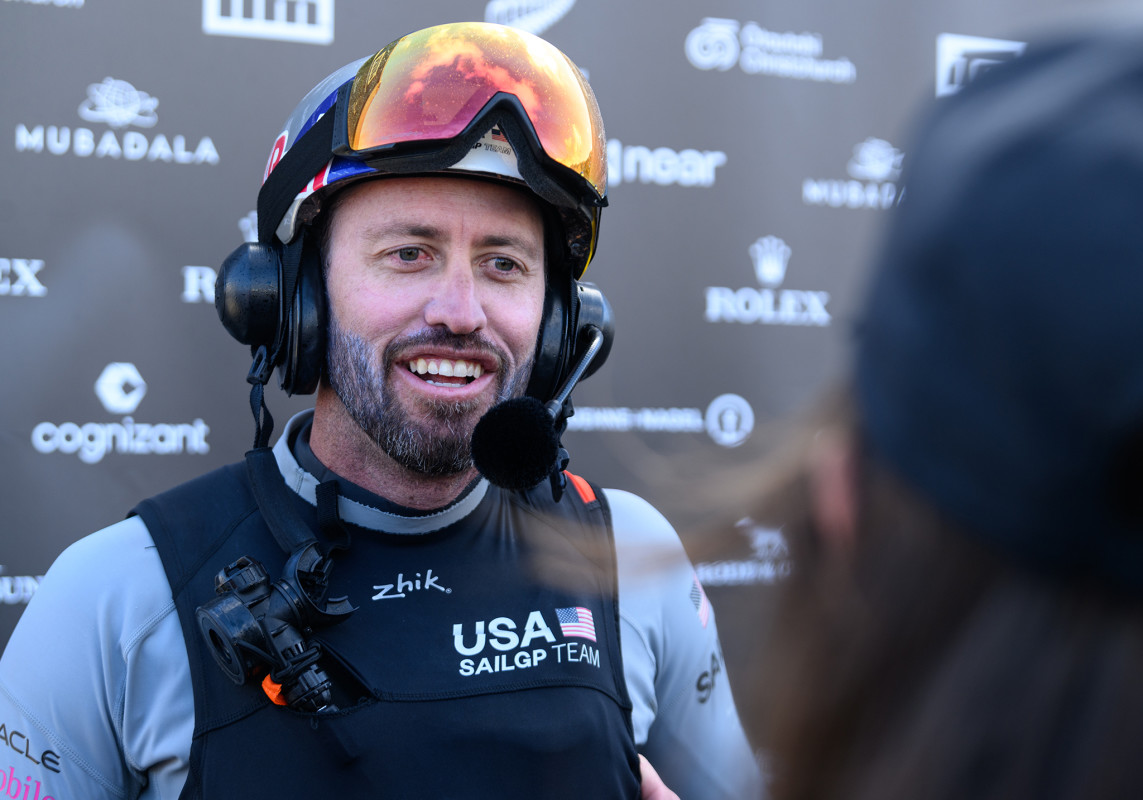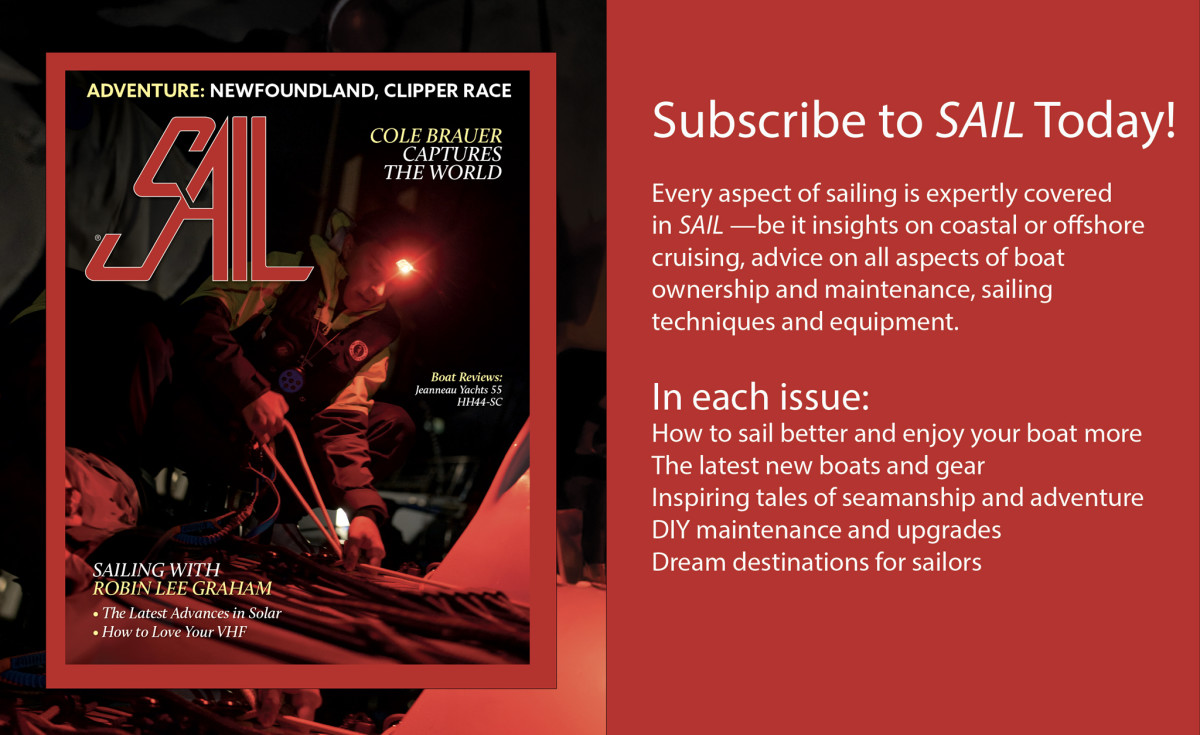

Picture by Ricardo Pinto for SailGP
American sailor Taylor Canfield, 35, grew up within the U.S. Virgin Islands and has been competing as an expert match racer and fleet racer since commencement from Boston Faculty in 2011.
At the moment the driving force for the SailGP U.S. crew, Canfield is a part of a brand new and eclectic crew of traders led by founding Uber engineer Ryan McKillen; his accomplice and J/70 champion skipper Margaret McKillen; and two-time world champion sailor Michael Buckley. On April 30, the crew introduced that skier and Olympic Gold medalist Lindsey Vonn would additionally be part of the board of US SailGP. Vonn additionally serves as an athlete advisor for US SailGP investor Avenue Sports activities Fund.
Canfield and the crew are specializing in the upcoming Grand Prix circuit at occasions in Bermuda (Might 4-5) adopted by Halifax, Nova Scotia (June 1-2), and New York Metropolis (June 22-23).
SAIL Journal caught up with Taylor Canfield this week from his residence in Newport, Rhode Island.

Picture by Felix Diemer for SailGP
SAIL: In school, you gained the ICSA Match Racing Nationwide Championship in 2010 and 2011 and have become the 2013 World Champion in match racing in addition to being a five-time Congressional Cup winner. What’s it that drew you to match racing? How did you carve a path to skilled crusing?
TC: It began with my all-time aim of attending to the America’s Cup as a result of—on the time—match racing occasions had been a feeder into the America’s Cup. I actually can credit score match racing for my success, however I feel persistence is the important thing to creating positive you’re the greatest. If you wish to excel on the sport, it’s vital to have the ability to sail as a lot as doable. I might say sail as typically as you possibly can, and you’ll get higher.
SAIL: Would you agree that school crusing was vital to your growth as a competitor?
TC: I’ve to credit score school crusing for a lot. Partly due to the crew racing facet, since you develop an consciousness of boat-on-boat interactions, you change into snug round different boats at slower speeds, it provides you spatial consciousness and prepares you for these chaotic moments. Moreover, crusing daily of the week and virtually each weekend is unbelievable coaching.
Additional, the co-ed groups in school train all of us competing that, ultimately, the perfect sailors get put ahead. I’m pleased to see the co-ed motion rising into skilled crusing and the expansion of ladies’s involvement in each degree of the game.
SAIL: At the moment, the SailGP US crew, which is co-ed, is made up primarily of American sailors. Would you say this can be a golden alternative for youthful American women and men?

Picture by Ricardo Pinto for SailGP
TC: Constructing and recruiting an all-American crew has been a aim of ours. We wish to see American sailors of my era and youthful get this chance. I labored towards crusing at this degree all through my match racing profession. However the F50s are far completely different and technically way more superior than what most American sailors compete on. We’re trying in the direction of the youthful era arising. In actual fact, throughout our North American stopovers in Bermuda, New York, and San Francisco we put out the phrase that we wish to have youth volunteering, and the response has been superb. They’re so eager to get a more in-depth take a look at this sort of racing.
SAIL: Tech investor and founding Uber engineer Ryan McKillen and his spouse Margaret McKillen are aggressive sailors who’re a number of the major traders of SailGP US. Is that this a singular alternative in our sport, that lots of the key traders are additionally aggressive sailors?
TC: I feel no matter avenue you select within the sport; we create our personal alternatives. I’ve been on a protracted journey, making an attempt to climb up the rankings and show myself at every degree. It’s a lengthy street, and also you’re going to be advised “no” a bunch of occasions. Nonetheless, the networking alternatives in aggressive crusing are enormous. In actual fact, I met Ryan McKillen crusing J70s and developed a friendship then. We now have a variety of respect for one another. We’re additionally teammates on the M32s. It’s a tremendous distinctive sport as a result of there may be a lot mixing of pros and amateurs.
SAIL: Now that you’re the driving force of the U.S. crew, how effectively are you aware the competitors?
TC: There are not less than 4 guys that got here out of match racing that we are going to compete in opposition to subsequent week in Bermuda and all through the North American portion of Season 4. Folks like Phil Robertson of SailGP Canada and Nicolai Sehested of SailGP Denmark are each our long-time opponents on the match racing circuit. We all know their tendencies and what they do. I’m glad I’ve had a lot expertise within the M32, which is sort of a slowed-down model of the F50s. In relation to the F50s, all types of situations come up. I do wish to exit and win each race I can. And it’s true these boats are one other degree of complicated, and there’s a lot extra danger concerned crusing on an F50. I might say they’re one of many hardest boats on the earth to sail.
For extra on Taylor Canfield and the American SailGP crew, control SAIL’s social media @sailmagazine. Managing editor Lydia Mullan might be becoming a member of the crew in Bermuda this weekend for a firsthand take a look at crusing’s most cutting-edge race circuit.

Might 2024
Trending Merchandise
[product_category category=”trending” per_page=”8″ columns=”2″ orderby=”date” order=”desc”].
